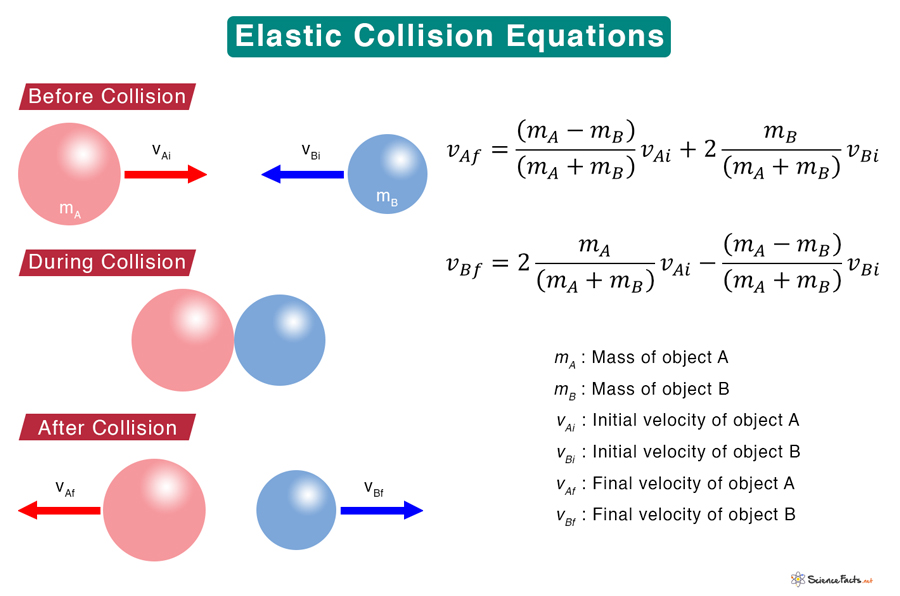Examples
Characteristics and Properties
Equations
Problems and Solutions
Total kinetic energy before and after the collision remains unchangedTotal momentum before and after the collision remains unchangedEnergy is not dissipated through heat or frictionColliding objects do not deform
Applying the law of conservation of momentum, Applying the law of conservation of kinetic energy, As there are two equations and two unknowns, we use the method of simultaneous equations to solve for vAf and vBf. These equations give the final velocities of objects A and B after a head-on collision. Let us look at a few specific cases. Case 1: Object A is at rest, and object B is in motion. Here, vAi = 0. Therefore, Case 2: Object B is at rest, and object A is in motion. Here, vBi = 0. Therefore, Case 3: Objects A and B have the same mass. Here, mA = mB = m According to the equations, the two objects bounce off each other, exchanging velocities. So, if two objects of equal masses collide head-on, they exchange momentum. Now, suppose B is at rest (vBi = 0). Then, It means that A comes to a stop, and B picks up the same speed as A. Solution: Given, mA = 650 kg, mB = 550 kg, vAi = 4.3 m/s, and vBi = 5.7 m/s We have, vAf = (mA – mB)/(mA + mB) vAi + 2mB/(mA + mB) vBi vAf = (650 kg – 550 kg)/(650 kg + 550 kg) x 4.3 m/s + 2 x 550 kg/(650 kg + 550 kg) x 5.7 m/s Or, vAf = 5.58 m/s And, vBf = 2mA/(mA + mB) vAi – (mA – mB)/(mA + mB) vBi Or, vBf = 2 x 650 kg/(650 kg + 550 kg) x 4.3 m/s – (650 kg – 550 kg)/(650 kg + 550 kg) x 5.7 m/s Or, vBf = 4.18 m/s Problem 2: Calculate the velocities of two objects, A and B, following an elastic collision, given that mA = 1.75 kg, mB = 3.25 kg, vA = 6.00 m/s, and vB = 0. Solution: Given, mA = 1.75 kg, mB = 3.25 kg, vA = 6.00 m/s, and vB = 0. Here, object A is moving, and object B is at rest (vBi = 0). Therefore, vAf = (mA – mB)/(mA + mB) vAi Or, vAf = (1.75 kg – 3.25 kg)/(1.75kg + 3.25 kg) x 6 m/s Or, vAf = – 1.8 m/s And, vBf = 2mA/(mA + mB) vAi Or, vBf = 2 x 1.75 kg/(1.75 kg + 3.25 kg) x 6 m/s Or, vBf = 4.2 m/s The negative sign indicates that object A bounces and move in the opposite direction after the collision.

